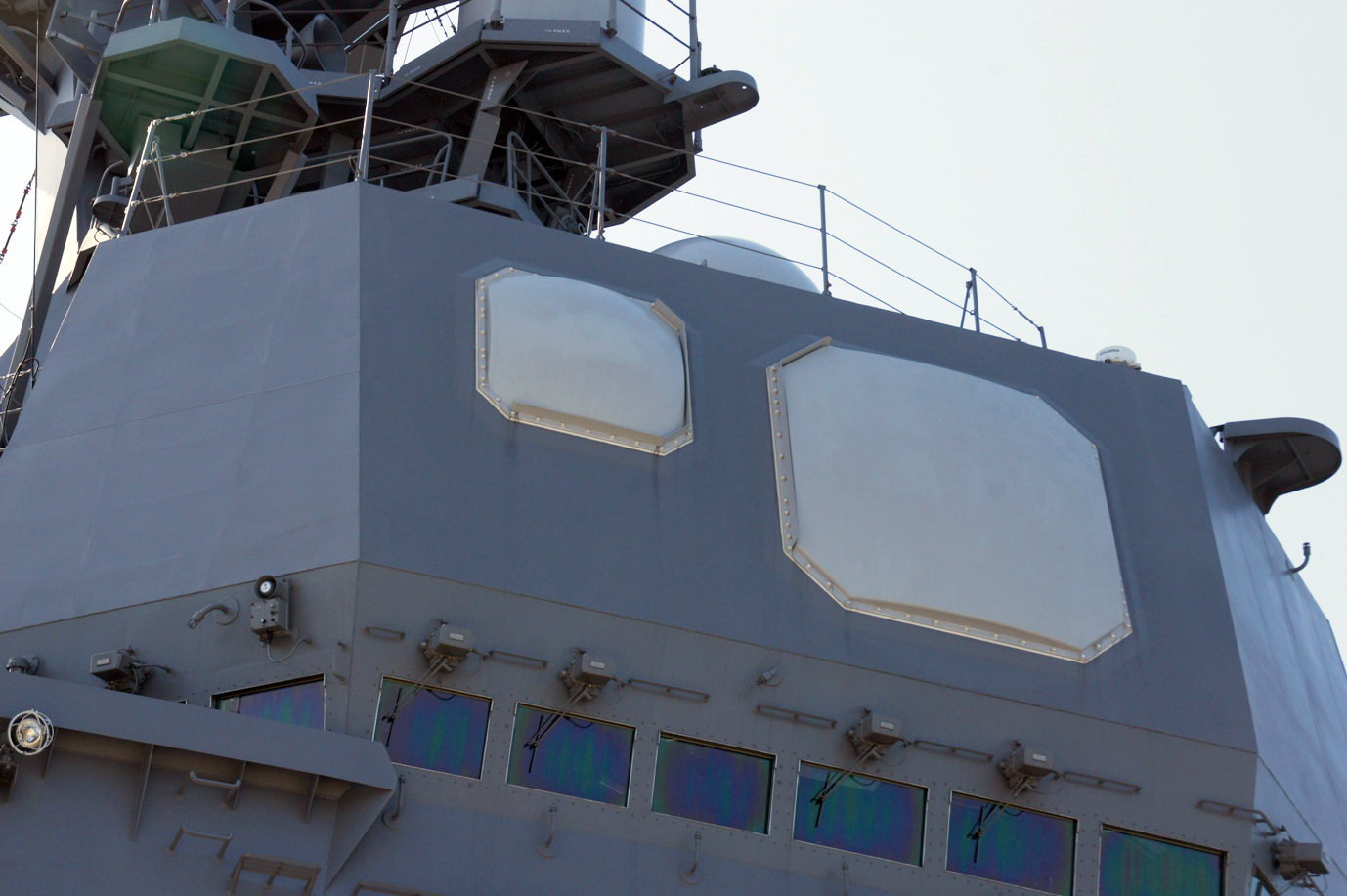FCS-3 on:
[Wikipedia]
[Google]
[Amazon]
 FCS-3 is an integrated naval weapons system developed by the Japanese Defense Ministry for the
FCS-3 is an integrated naval weapons system developed by the Japanese Defense Ministry for the
Japan Maritime Self-Defense Force
The , abbreviated , also simply known as the Japanese Navy, is the maritime warfare branch of the Japan Self-Defense Forces, tasked with the naval defense of Japan. The JMSDF was formed following the dissolution of the Imperial Japanese Navy ( ...
.
This system is composed of weapon-direction and fire-control subsystem and a multi-function radar subsystem. The multi-function radar subsystem adopted active electronically scanned array
An active electronically scanned array (AESA) is a type of phased array antenna, which is a computer-controlled antenna array in which the beam of radio waves can be electronically steered to point in different directions without moving the a ...
(AESA) technology, and there are two sets of antennas: the larger one is a C-band C band may refer to:
* C band (IEEE), a radio frequency band from 4 to 8 GHz
* C band (infrared), an infrared band from 1530 to 1565 nm (roughly 200 THz)
* C band (NATO)
The NATO C-band is the obsolete designation given to the radio frequen ...
radar for surveillance and tracking, the smaller one is an X-band
The X band is the designation for a band of frequency, frequencies in the microwave radio region of the electromagnetic spectrum. In some cases, such as in communication engineering, the frequency range of the X band is set at approximately 7.0� ...
radar as a fire-control radar
A fire-control radar (FCR) is a radar that is designed specifically to provide information (mainly target azimuth, elevation, range and range rate) to a fire-control system in order to direct weapons such that they hit a target. They are someti ...
.
After a prolonged sea trial on board JS ''Asuka'', this system was introduced in 2007 on the . The enhanced version, FCS-3A, was employed on the ''Akizuki''-class destroyers., and limited-function version, OPS-50, was also delivered for the s. The fire-control function are omitted in the OPS-50 system, so they have only one set of antennas operating C-band.
The Asahi-class destroyer features an FCS-3A radar that uses Gallium nitride
Gallium nitride () is a binary III/ V direct bandgap semiconductor commonly used in blue light-emitting diodes since the 1990s. The compound is a very hard material that has a Wurtzite crystal structure. Its wide band gap of 3.4 eV af ...
technology to improve its performance.
References
{{reflist Military radars of Japan Naval radars Japan Maritime Self-Defense Force Military equipment introduced in the 2000s